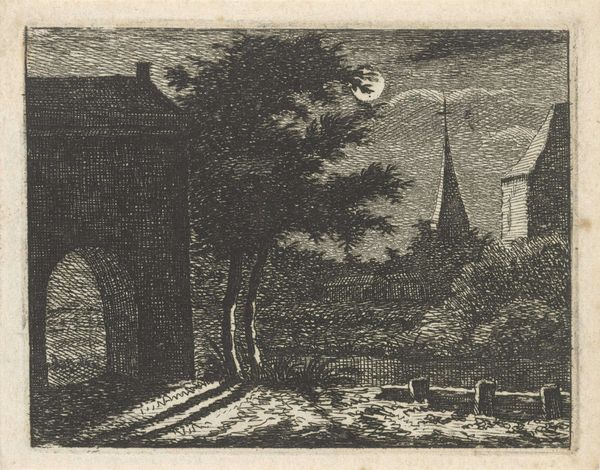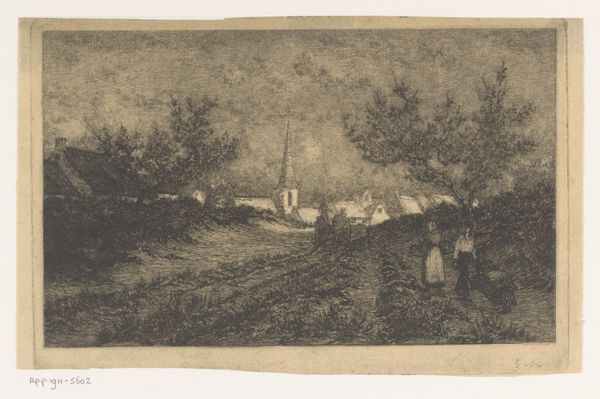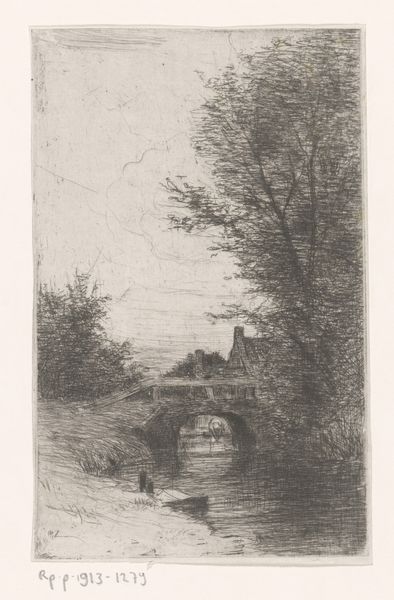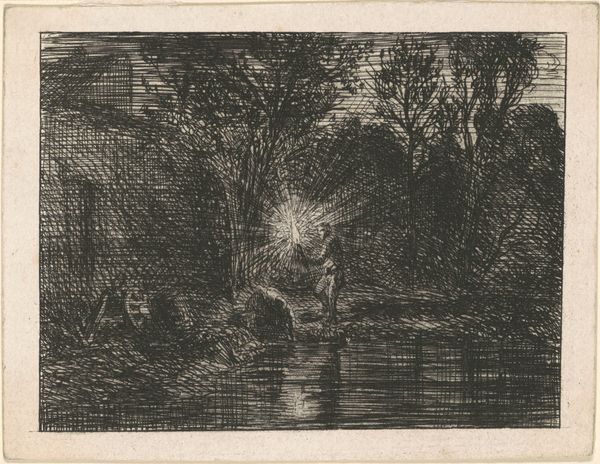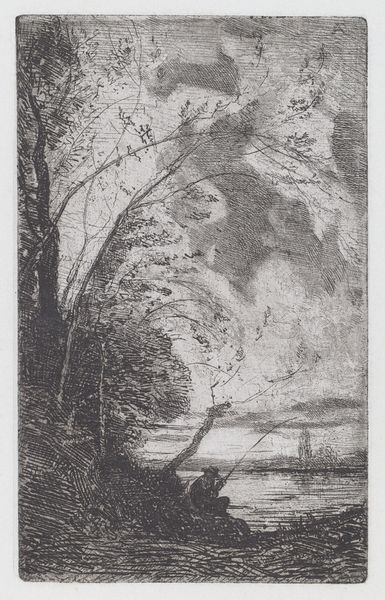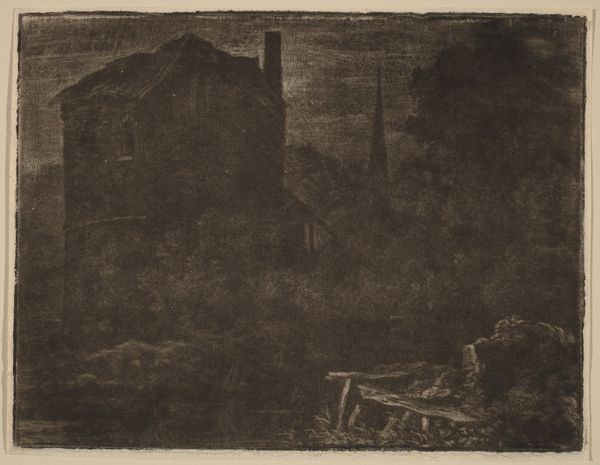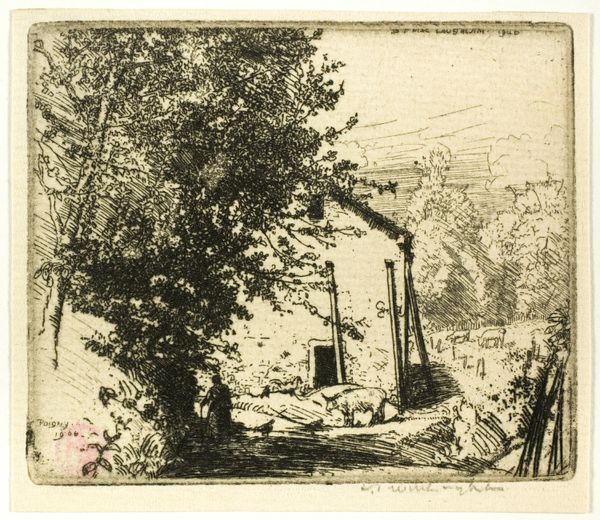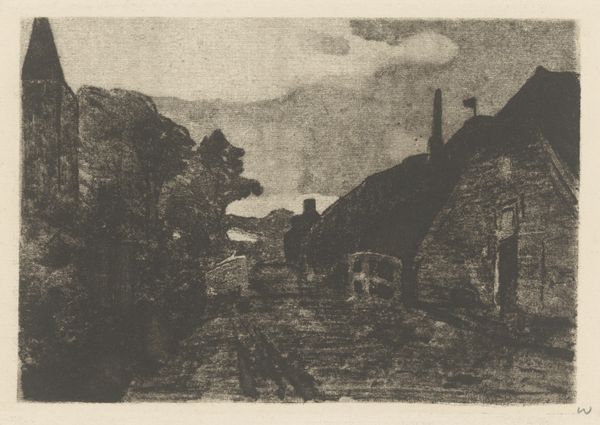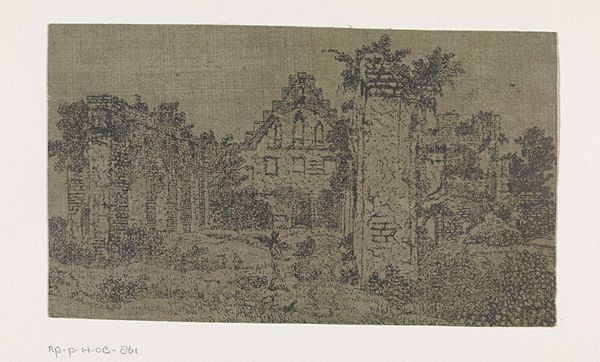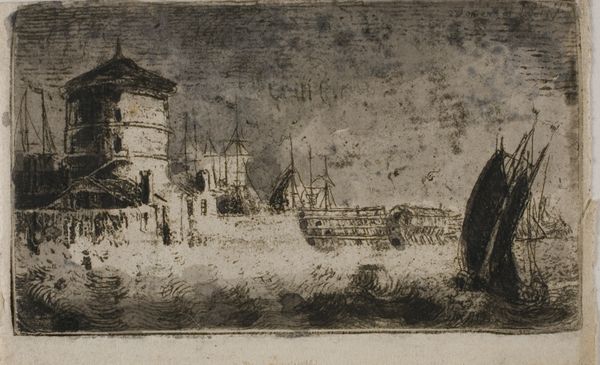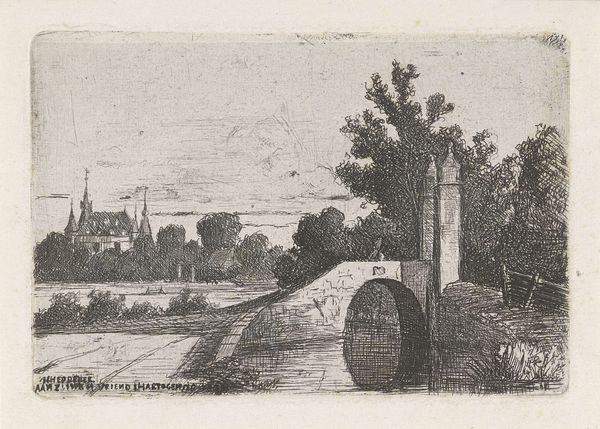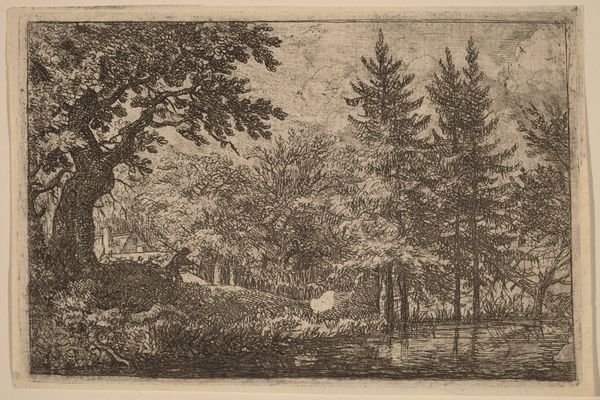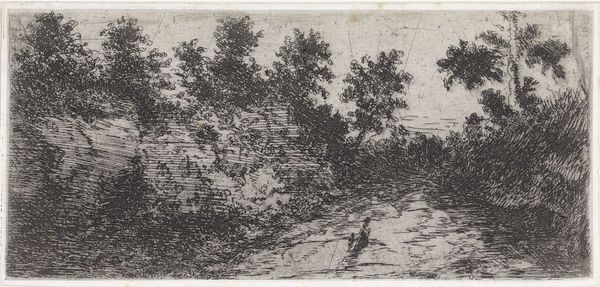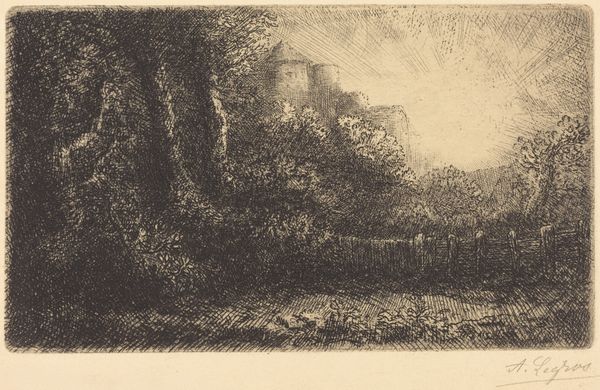
drawing, print, etching
#
drawing
#
dutch-golden-age
# print
#
etching
#
landscape
#
charcoal drawing
#
genre-painting
Dimensions: height 50 mm, width 65 mm
Copyright: Rijks Museum: Open Domain
Editor: Here we have Caspar Philips’s 1766 etching, "Dorpsgezicht bij nacht" – "Village Scene at Night." It's a charming little Dutch Golden Age landscape. I’m struck by how the etching technique creates this almost dreamlike mood. What are your initial thoughts? Curator: The immediate impression speaks to the labor and materials. Consider the copper plate: its cost, the craftsman's time to prepare it. And the etching itself. Each line bitten by acid, a painstaking process reflecting the social value placed on detailed depictions, particularly landscapes in the Dutch Golden Age. Editor: That's a fascinating way to look at it, shifting the focus from the imagery to the physical creation itself. But what about the "night" aspect of the scene? Curator: Ah, the “night.” Think about the availability of light. Candles, oil lamps—luxuries for some. This scene wasn’t passively observed. It's constructed through skilled labor and controlled resources, and invites reflection upon labor, craft, and consumption of luxury items by the depicted social class. Editor: So, it's less about capturing a natural scene and more about a commentary on the materials and economic conditions that allow for its creation? Curator: Precisely. It raises questions about who had the resources to commission, produce, and consume such an image. Consider who would own this etching? What space would it inhabit? Whose story does the artwork not tell? It encourages questions of access and privilege inherent within the artistic practice and economy of the time. Editor: That gives me a whole new perspective on how to approach these older works. I tend to focus on what's depicted, but it's equally important to think about the *how* and *why* it was made. Curator: Precisely! To really understand something, engage in process.
Comments
No comments
Be the first to comment and join the conversation on the ultimate creative platform.
